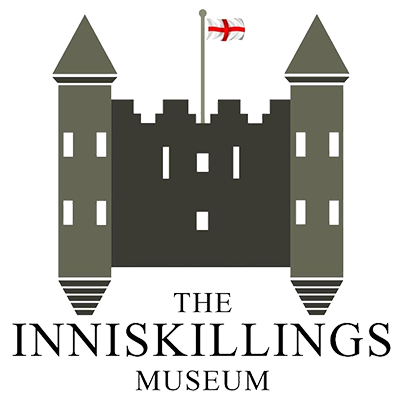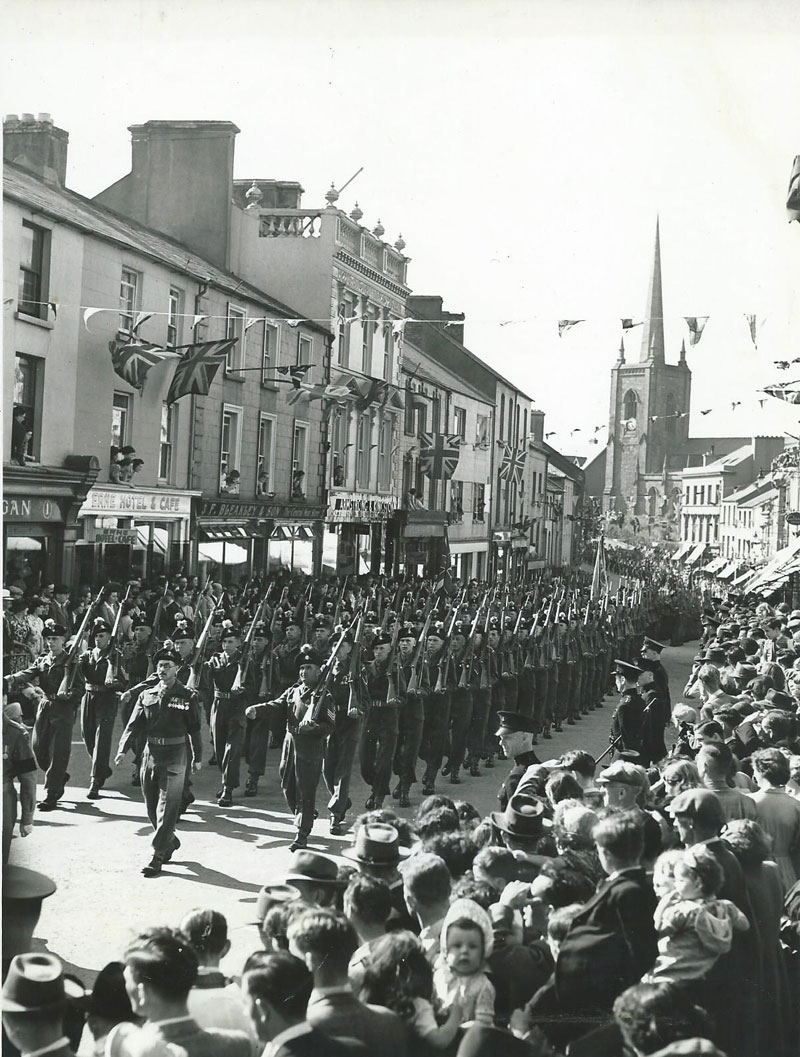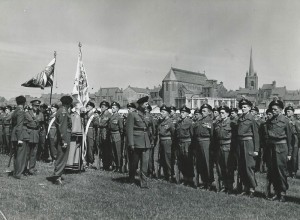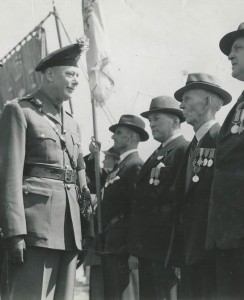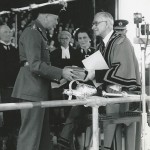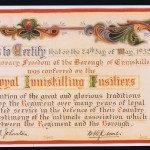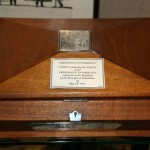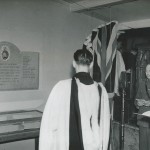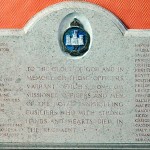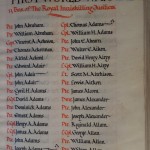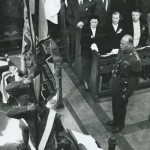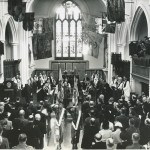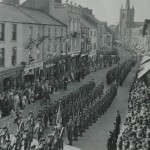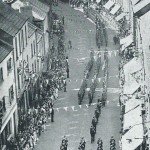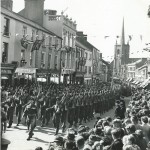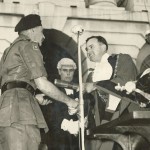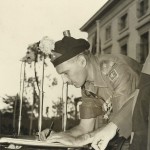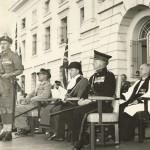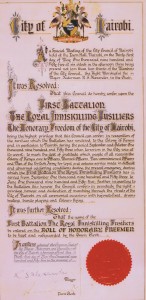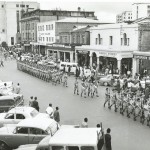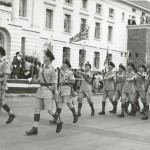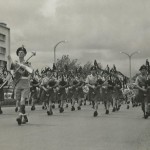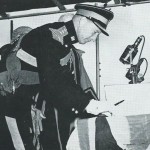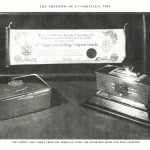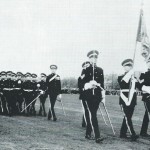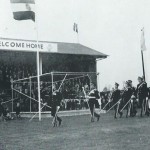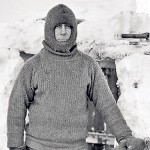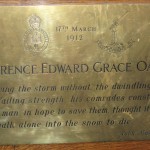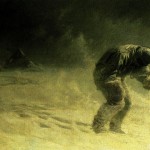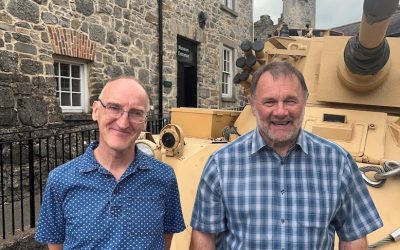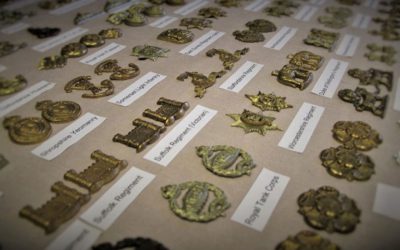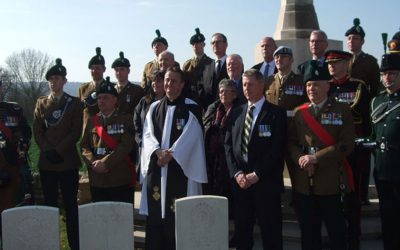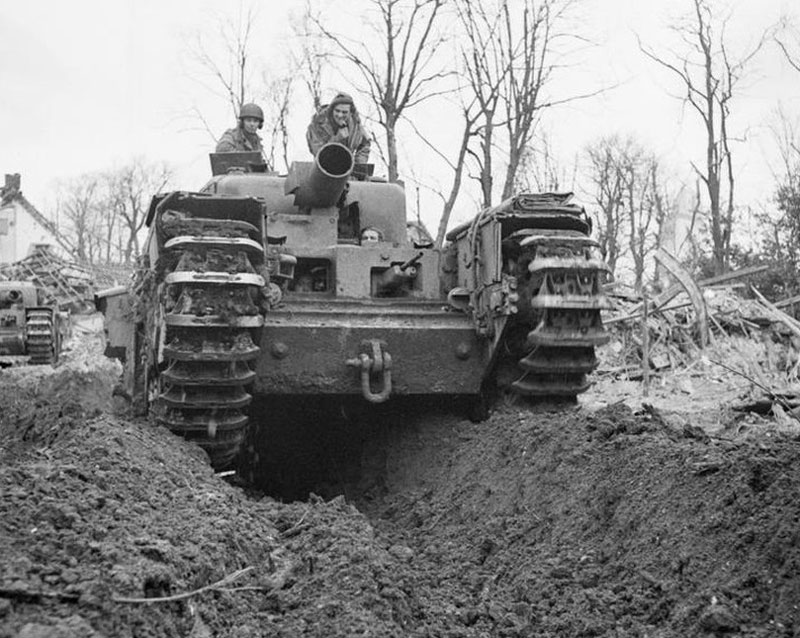Freedom of a town or city.
Freedom is an ancient privilege a town or city can grant to a regiment to march through the streets ‘with drums beating, Colours flying and bayonets fixed.’
In Roman and medieval times, troops were not allowed inside the city walls or boundary. This was to protect public security and civil order. Soldiers had to camp outside. The only exception could be a victory parade. The Freedom was an honour only granted to troops who had earned the trust of the local population.
Today, it is a ceremonial honour usually granted to a unit with historic ties to the area as a token of appreciation for its long and dedicated service.
In May 1952, the Royal Inniskilling Fusiliers received the Freedom of Enniskillen and in June 1955, the Freedom of the city of Nairobi, Kenya. This latter is a unique honour, as no other British regiment has been granted the Freedom of a colonial city.
In May 1956, the 5th Royal Inniskilling Dragoon Guards received the Freedom of Enniskillen. At the time, it was the only cavalry regiment to receive a Freedom.
The Royal Inniskilling Fusiliers, Enniskillen, 24th May 1952. (St Lucia Day)
300 men of 1st, 2nd, and 5th (TA) Battalions of the Royal Inniskilling Fusiliers were drawn up on the Broad Meadow, Enniskillen.
The Colours of 1st and 5th (TA) Battalions were on parade as were the band of the 1st Battalion and the Drums and Pipes of the 5th (TA) Battalion. There were also large detachments from the branches of the Regimental Association, which included James Duffy, VC, who earned his decoration while serving with the Inniskillings in Palestine in 1917. There were also various cadet units, including one from Portora Royal School.
The Colonel-in-Chief, HRH the Duke of Gloucester, after receiving the Royal Salute, inspected the parade. The Mayor of Enniskillen, Alderman WE Johnston then presented him with the wooden casket containing the scroll of Freedom of Enniskillen.
- The Duke of Gloucester receives the Freedom Scroll from the Mayor of Enniskillen, Alderman WE Johnston
- Freedom Scroll
- Freedom of Enniskillen Scroll Casket
In the afternoon, the Duke of Gloucester unveiled the Regimental War Memorial in St Macartin’s Cathedral. This consisted of a Book of Remembrance and a stone tablet, with inscription and the regiment’s battle honours (this was before the creation of the Regimental Chapel in the north isle of the Cathedral in 1970).
- Dedication of the Inniskilling War Memorial
- Inniskilling Memorial tablet
- A page of the Memorial Book – WW1
A Memorial Window to the Royal Inniskilling Fusiliers who died in Second World War was presented and unveiled by Brigadier EEJ Moore, DSO, Colonel of the Regiment.
The Duke also received from the Bishop of Clogher, Rt Revd Richard Tyner, the Colours of the 2nd Battalion, which had been laid up in 1948. These were then returned to the Battalion, which had just been re-formed, after being disbanded in 1947.
At 5.00 pm, the regiment marched, with Colours flying, bayonets fixed and drums beating through the packed streets of Enniskillen. It was a unique occasion as the Colours of three Battalions, 1st, 2nd, and 5th (TA) were on parade.
- Freedom Parade through Enniskillen (1)
- Freedom parade through Enniskillen (2)
- Freedom parade through Enniskillen (3)
Royal Inniskilling Fusiliers, Nairobi, 2nd June 1955.
Kenya, with its capital city Nairobi, was a British colony in Africa. It achieved independence in 1963.
From 1952 to 1960, the British fought a native insurgency called the Mau Mau uprising.
The Inniskillings had two periods of service in Kenya, 1953-55 and 1960-62.
In June 1955, the regiment was granted the Freedom of Nairobi. 300 officers and men of the 1st Battalion, led by the Battalion pipers, paraded through the city. Alderman RS Alexander presented the scroll of Freedom to Lt Col GF Maxwell.
- Lt Col Maxwell receives the scroll
- Lt Col Maxwell signs the Freedom document
- Lt Col Maxwell formally thanks the Mayor and City Council
On 30th March 1960, at the request of the Mayor of Nairobi, the 1st Battalion exercised the regiment’s right as Freemen of the city to march with “Colours flying, bayonets fixed and bands playing”.
- Exercising Freedom parade (1)
- Exercising Freedom parade (2)
- Drums and pipes, Nairobi
The occasion was the 10th anniversary of the granting of the city’s charter. The Battalion again exercised its freedom rights in a farewell parade in July 1962, when the salute was taken by the city’s first African mayor.
5th Royal Inniskilling Dragoon Guards, Enniskillen, 12th May 1956.
Two squadrons, and the band, enlarged by the pipes of the Royal Inniskilling Fusiliers, formed up on parade on the Broad Meadow, Enniskillen. Also assembled were large detachments of the Regimental Associations, many from England. On the arrival of the Colonel-in-Chief, ex- King Leopold of the Belgians, the Royal Salute was played. The regiment was then inspected by His Majesty.
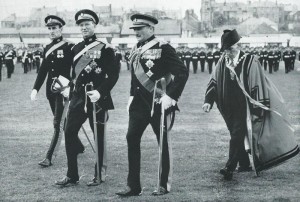
King Leopold, Colonel in Chief (centre) with the Colonel of the Regiment, General Sir Charles Keightley and the Mayor of Enniskillen, Alderman Algeo
At the Freedom ceremony, a silver casket containing the honorary Freedom of the Borough was presented by the Mayor, Alderman Algeo, to King Leopold. Also presented was a painting of the Regiment preparing to cross the Rhine in 1945.
- King Leopold signs the Roll of Honorary Freemen
- Dragoons Scroll Casket
- Scroll & Casket
At the conclusion of the ceremony the regiment, accompanied by the Inniskilling Fusilier pipers, marched through the streets of Enniskillen and past the Town Hall where the King took the salute.
In the afternoon, King Leopold unveiled a plaque in the entrance hall of the Town Hall in memory of Captain Lawrence Oates, 6th Inniskilling Dragoons, hero of Scott’s Antarctic expedition of 1912.
- Captain Lawrence Oates in Antarctica
- Oates Plaque
- Oates leaves his tent
This plaque is now in the Inniskillings Museum at Enniskillen Castle.
